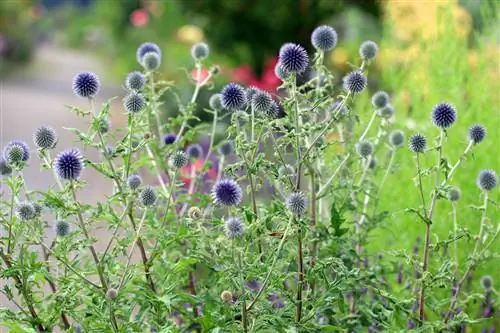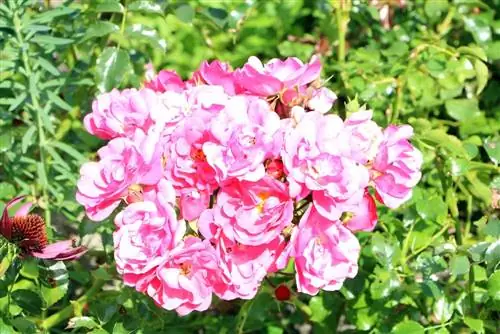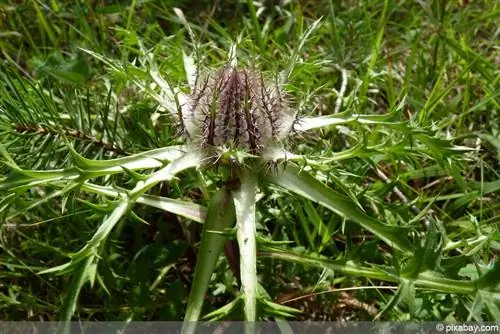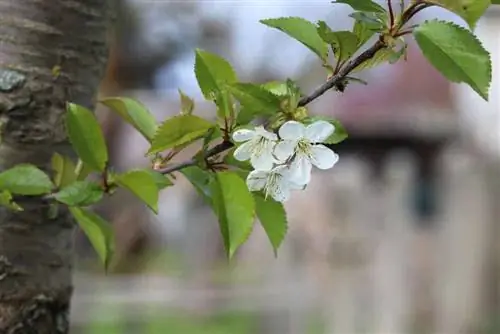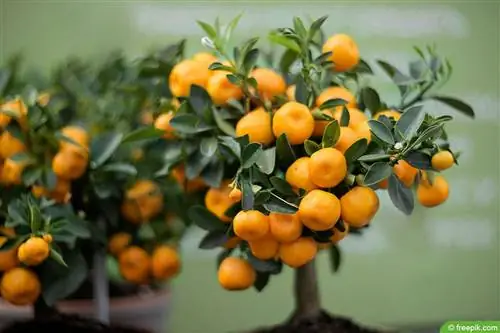- Author admin [email protected].
- Public 2023-12-17 03:39.
- Last modified 2025-06-01 06:48.
Global thistle is not difficult to care for. What usually causes problems for her is excessive attention. If you don't make any mistakes when planting, the rest won't be a problem.
Location
The location for the globe thistles should get as much sun as possible. The plants are perennial and not easy to transplant. You should therefore select the location in advance so that the thistles are not disturbed in the next few years and can develop well.
Location Requirements:
- sunny
- dry
- skinny
- sheltered from the wind
Ideal locations for globe thistles are along terraces that face south. The plants also look good along a house wall. In such locations you even benefit from the indirect heat that the wall gives off at night.
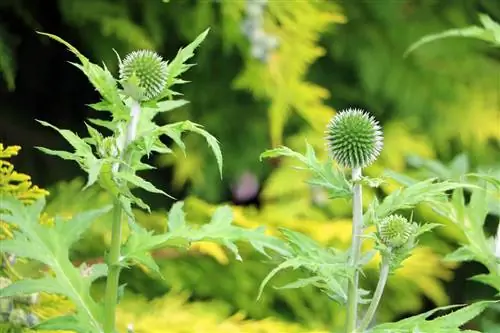
Note:
Plant the globe thistles together with other plants that also have comparable requirements. If it is only in partial shade or too wet, it usually leads a miserable existence.
Planting
The ideal time to plant globe thistles is from the end of March to the end of April. It is important that there is no more frost forecast. Although globe thistles are perennial, they are more sensitive to frost in the first few years.
The soil for the plants should not only be poor, but also very permeable. The plants cannot tolerate waterlogging at all and then die quickly. The soil should therefore largely consist of a permeable substrate.
Suitable substrates are:
- gravel
- lava granules
- Sand
- expanded clay
When you prepare the location for the globe thistles, you can also mix several substrates together. There is also some of the original topsoil at the site. Avoid nutrient-rich substrates such as compost or potting soil. This also applies if you plant the globe thistles in a pot.
Sowing
A simple way to propagate globe thistles is by sowing them. You can also let plants that are several years old flower and leave a few heads that will go to seed later. However, if you are sowing globe thistles in the garden for the first time, they should be sown in spring. This gives the plants enough time to root themselves well in the ground until winter.
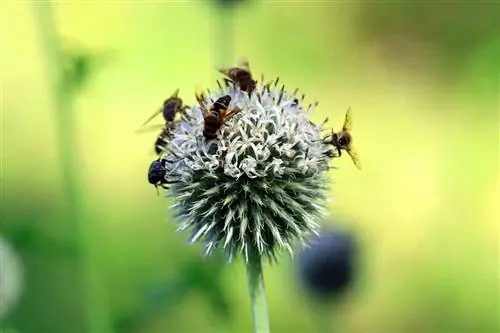
If a very dense population of globe thistles has formed through self-sowing, only leave the strongest plants standing. Four to five plants per square meter are more than enough, because many globe thistles are very large and need a lot of space to spread out.
Pouring
Sphere thistles are the ideal plants in the garden if you don't want to make gardening difficult. This is particularly evident in ongoing care, especially when watering. While many perennials only grow really well when they are supplied with sufficient water, globe thistles appreciate exactly the opposite.
Most of the time it is not even necessary to water them during the season. You just have to make sure that the soil doesn't dry out completely when you transplant globe thistles. Once the plants have rooted, you can slowly reduce the amount of water.
Tip:
Occasional watering, especially when the globe thistles are in bloom, encourages longer-lasting blooms.
Fertilization
Only carry out basic fertilization in spring. You no longer need to fertilize as the year progresses. Mature compost, for example, is suitable for fertilizing. Work a small amount around the plants. These small amounts are enough for the plants.
Also avoid adding any additional rotting organic material such as mulch. The benefits of mulching can lead to problems, especially for plants that prefer dry and poor locations. Not only does mulch provide additional nutrients as it rots, it also retains moisture in the soil. This can in turn promote rot in the root area. It can also promote other secondary diseases such as the formation of fungi on the plants.
pruning
You don't necessarily have to cut the globe thistle until it's time to prepare it for wintering in the fall, but it does benefit from occasional pruning.
If you regularly cut back the dead flowers, this will promote the formation of new shoots and flowers. Although the globe thistles look interesting even when they have bloomed, the formation of seeds takes a lot of energy from the plants. If you are considering propagating globe thistle through self-sowing, only allow a few inflorescences to mature. This doesn't take up too many of the plant's resources.
Wintering
The globe thistle is only completely hardy after a few years. In the first three to four years you should protect them from severe frost.
Wintering instructions:
- loose compacted soils superficially again
- Cut the plant back to the ground in late autumn
- leave basal leaves on the plant
- Cover the ground within a radius of 20 - 30 cm with straw
As soon as there is no longer any danger of frost in spring, the winter addiction is removed again. Instead of using straw, you can also place a layer of leaves or brushwood over the plants. Make sure that the cover is loose.
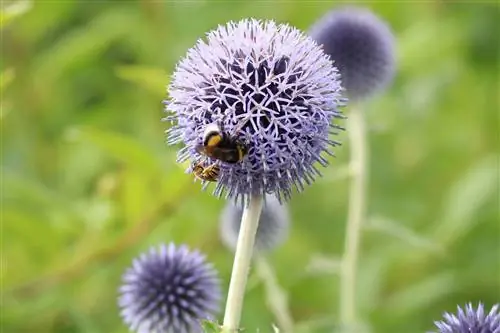
If you cultivate the globe thistle in a pot, you should also pack the pot well so that the roots do not suffer frost damage. For example, several layers of cardboard or newspaper are ideal for this.
Diseases
The advantage of globe thistles is that they are hardly susceptible to diseases or pests if they have the ideal conditions. Occasionally they can be attacked by aphids. These can usually be removed quickly with soapy water.
Usage
The globe thistles are not only ideal bedding perennials, they can also be used in different ways. They are very undemanding plants in bouquets that last a long time. The globe thistles also look attractive in dry arrangements. For this it is particularly important that you cut the flowers shortly before they have fully bloomed.
variety selection
There are several varieties of globe thistles that can also be combined with each other. They usually differ in the height or size of the inflorescences. If you combine several varieties, always make sure that the plants do not take away each other's light.

